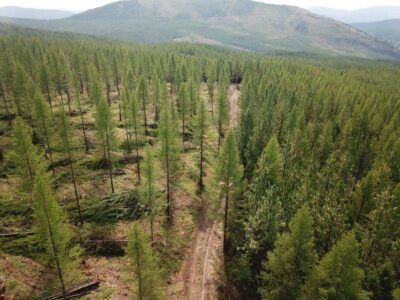The Quagmire of Clean Water Act Jurisdiction
The scope of federal jurisdiction over water bodies and wetlands remains as murky as ever.
The Biden Administration announced on Monday that it would not meet a February target date to issue a revised definition of federal jurisdiction under the Clean Water Act. It still plans to issue a revised definition later in the year. That sounds like a very technical issue. But it actually determines the extent to which the federal government can prevent water pollution and protect wetlands across the nation. The Biden proposal basically calls for case-by-case decisions about federal jurisdiction. It’s also the latest chapter in one of the most snarled-up regulatory issue of our times.
The story begins with the 1972 passage of the Clean Water Act. The Act requires permits for dredge-and-fill operations and for pollution discharges into “navigable waters.” Traditionally, navigable waters were tidal waters or waterways that could be used for commercial transport. Although Congress used the traditional term, the statute eschews the traditional meaning. Instead, it defines navigable waters as “waters of the United States.” It’s clear that this definition is broader than the traditional definition. But how much broader? The Supreme Court has spoken to the issue several times. The most recent decision featured two separate definitions from members of its five-Justice majority. There was no majority opinion. Justice Scalia, speaking for four members of the Court, gave a narrow, formalistic definition that would include only a few wetlands and exclude most streams in arid regions. In a separate opinion, Justice Kennedy defined federal jurisdiction to include waterbodies and wetlands with a “significant nexus” to traditional navigable waters. The lower courts generally applied Justice Kennedy’s definition or combined it with the Scalia approach.
The Obama Administration attempted to provide clarity with its Waters of the United States (WOTUS) rule, which immediately became mired in intractable litigation. The Trump Administration repealed WOTUS and instead issued its Navigable Waters Protection Rule, which was much narrower than WOTUS but not quite as narrow as the Scalia approach. At present, the Trump rule has been vacated by two lower courts, although those cases are now on appeal.
In the meantime, the Biden Administration issued a regulation repealing the Trump rule and more or less returning to a Bush Administration rule as a temporary fix. The Bush definition was quite open-ended, defining navigable waters as: “All other waters such as intrastate lakes, rivers, streams (including intermittent streams), mudflats, sandflats, wetlands, sloughs, prairie potholes, wet meadows, playa lakes, or natural ponds, the use, degradation or destruction of which could affect interstate or foreign commerce.”
The Biden Administration version is a little different. It essentially extends federal jurisdiction to anything that is covered either by Scalia’s definition or Kennedy’s. Like the Bush rule, the proposed rule calls for case-by-case decision-making rather than providing detailed standards. It’s this rule that the Administration was hoping to finalize in February but that will now take longer.
In issuing its WOTUS rule, the Obama Administration was trying to provide clarity and uniformity to federal regulation. It also sought to accommodate the Supreme Court’s rulings while establishing a scientifically sensible regulatory scheme. The Obama Administration was also hoping for Chevron deference by the courts. Ensuing events have shown that crafting such a rule is (1) enormously difficult, (2) certain to spark years of chaotic litigation, and (3) not likely to get any special deference from the courts.
The proposed rule would basically leave the issue of federal jurisdiction to be thrashed out in considering of individual permits and case-by-case rulings. That may make better political sense, given that any broad rule is likely to ignite a firestorm from conservative media and commentators. A single permit case is likely to be fact-specific, which may temper the impulse of judges like Scalia to issue their own comprehensive definitions. A more fundamental advantage is that it is much easier for a judge to understand all the sciences and policy issues involved in a single permit case than the exponentially greater complexities that could arise in every possible future permit application.
The Biden Administration is currently using the modified Bush rule as a result of the district court rulings. It now seems to be having trouble codifying that approach quickly. That augurs poorly for the chances of bringing the WOTUS wars to any speedy conclusion.
Reader Comments
One Reply to “The Quagmire of Clean Water Act Jurisdiction”
Comments are closed.








If Biden is a one-term President, delay in issuing the WOTUS and other rules increases the odds that the inevitable litigation will be resolved in a different and unfriendly Administration.